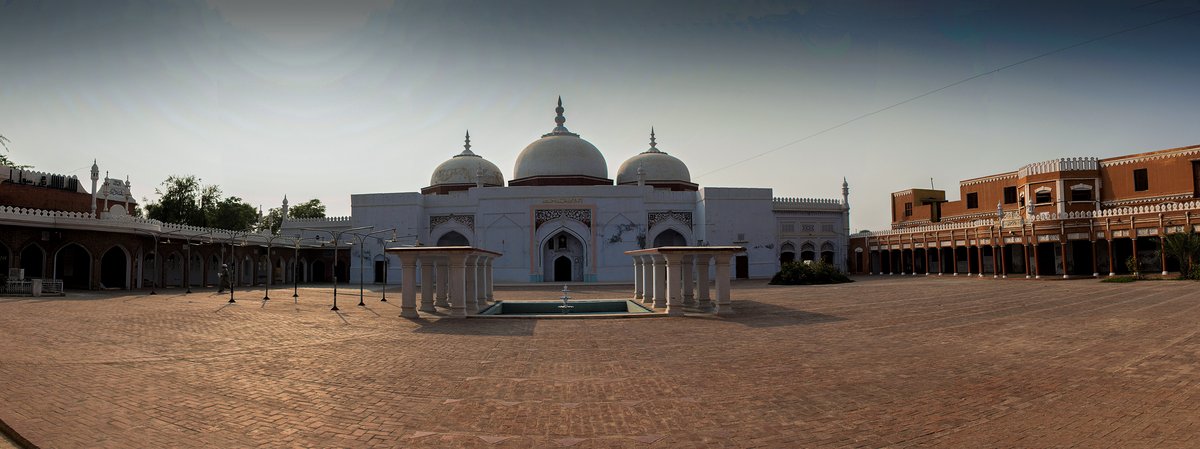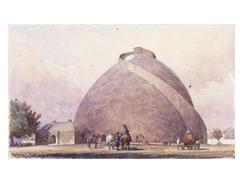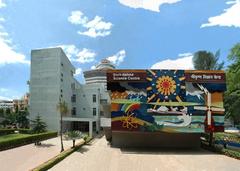
Guide to Visiting Sher Shah Suri Masjid, Patna, India
Date: 18/08/2024
Introduction
The Sher Shah Suri Masjid, also known as Shershahi Mosque, stands as a remarkable testament to the architectural ingenuity and cultural heritage of medieval India. Erected between 1540 and 1545 by Sher Shah Suri, the founder of the Suri Empire, the mosque exemplifies the Afghan style of architecture with its robust construction, grand domes, and intricate decorative elements. Located at the southwest corner of Purab Darwaza near Dhawalpura in Patna, Bihar, the mosque is a key landmark for both history enthusiasts and spiritual seekers (Incredible India, Explore Our India).
This comprehensive guide covers the mosque’s historical background, architectural highlights, visitor information, and practical travel tips to help you plan a memorable visit.
Table of Contents
- Historical Background
- Architectural Features
- Visitor Information
- Nearby Attractions
- Travel Tips & Etiquette
- Frequently Asked Questions (FAQ)
- Conclusion
- References
Historical Background
Construction and Purpose
Sher Shah Suri Masjid was built during the reign of Sher Shah Suri, an ethnic Afghan ruler originally named Farid Khan. Renowned for his administrative reforms and military prowess, Sher Shah Suri commissioned the mosque to commemorate his rule and as a center for communal worship (Incredible India). The mosque’s construction began soon after his victory over Mughal Emperor Humayun, marking a pivotal moment in North Indian history (Wikipedia).
Architectural Style
The mosque is a classic example of Afghan architecture, characterized by imposing structures, a central dome surrounded by four smaller domes, and intricate stone carvings. The symmetry, geometric patterns, and calligraphic ornamentation reflect the artistic influences of Persian, Afghan, and Indian traditions (Explore Our India, The Islamic Heritage).
Location and Layout
Strategically situated near Purab Darwaza, the mosque’s spacious prayer hall is designed to accommodate large gatherings. Its symmetrical layout and harmonious proportions foster a serene and inviting atmosphere (The Islamic Heritage).
Historical and Cultural Significance
The mosque is not only a place of worship but also a symbol of religious tolerance and architectural evolution in India. It continues to serve the local Muslim community and attracts visitors interested in the region’s rich history (Tourist Places).
Architectural Features
- Central and Peripheral Domes: The mosque’s most distinctive feature is its prominent central dome, surrounded by four smaller domes. Due to the unique design, only three domes are visible from any vantage point, both inside and outside the mosque (Explore Our India).
- Octagonal Stone Slab: A tomb within the complex is capped with an octagonal stone slab, symbolizing the link between earth and the divine (The Islamic Heritage).
- Facade and Ornamentation: The outer walls feature intricate carvings and calligraphic inscriptions, showcasing the craftsmanship of the era (Audiala).
- Spacious Prayer Hall: The interior boasts decorative motifs, geometric designs, and elaborate calligraphy, enhancing both the spiritual and aesthetic experience.
- Structural Integrity: Ongoing conservation efforts have preserved the mosque’s grandeur, ensuring it remains a significant heritage site (Audiala).
Visitor Information
Visiting Hours and Entry
- Timings: Open daily from 6:00 AM to 8:00 PM.
- Entry Fee: There is no entrance fee. Voluntary donations are appreciated for maintenance (Audiala).
Accessibility
- Location: Southwest corner of Purab Darwaza, near Dhawalpura, Patna, Bihar.
- Transport: Easily accessible via taxis, auto-rickshaws, public buses, and private vehicles. The nearest railway station is Patna Junction, well-connected to major Indian cities.
Best Time to Visit
The ideal period for visiting is from October to March, when the weather is cooler and more comfortable for sightseeing.
Nearby Attractions
Enhance your visit by exploring these notable sites in Patna:
- Patna Museum (Jadu Ghar): Houses an extensive collection of artifacts, Mughal and Rajput paintings, and historical objects (Walk Through India).
- Golghar: A massive granary built in 1786, offering panoramic views of the city (Walk Through India).
- Takht Sri Patna Sahib: A revered Sikh pilgrimage site, marking the birthplace of Guru Gobind Singh (Walk Through India).
- Mahavir Mandir: A popular Hanuman temple adjacent to Patna Junction (Walk Through India).
- Gandhi Maidan: A historic ground often used for public gatherings and cultural events.
Travel Tips & Etiquette
- Dress Code: Wear modest clothing covering shoulders and knees.
- Footwear: Remove shoes before entering the mosque; bring a bag for your footwear.
- Photography: Permitted, but avoid flash inside the prayer hall and seek permission from authorities as needed.
- Guided Tours: Local guides can provide deeper insights into the mosque’s history and architecture.
- Sanctity: Maintain silence and behave respectfully as it is an active place of worship.
- Cleanliness: Dispose of litter in designated bins and help keep the premises clean.
- Follow Instructions: Adhere to any site-specific rules or guidelines for a smooth visit.
Frequently Asked Questions (FAQ)
Q: What are the visiting hours for Sher Shah Suri Masjid?
A: The mosque is open daily from 6:00 AM to 8:00 PM.
Q: Is there an entrance fee?
A: No, entry is free, but donations are welcome.
Q: How can I reach the mosque?
A: Located in central Patna, the mosque is accessible by local transport and is near Patna Junction railway station.
Q: What is the best time to visit?
A: October to March, when the weather is pleasant.
Q: Are guided tours available?
A: Yes, local guided tours can be arranged to enrich your experience.
Conclusion
The Sher Shah Suri Masjid is much more than a historical monument—it is a living symbol of the Suri Empire’s cultural and architectural legacy. Its unique Afghan design, accessible location, and proximity to other significant attractions make it a must-visit for travelers to Patna. Whether you are drawn by its history, architecture, or spiritual atmosphere, a visit to this mosque is sure to be both enlightening and memorable (The Islamic Heritage, Tourist Places).
For more travel inspiration and updates, follow us on social media and download the Audiala mobile app.
References
- Incredible India
- Explore Our India
- The Islamic Heritage
- Tourist Places
- Audiala
- Walk Through India
- Wikipedia
- Heritage Times




